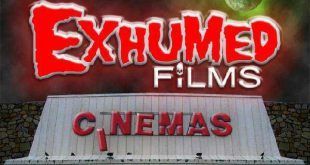If recently asked whether you’ve seen evil, many would unfortunately be able to reply with a “yes”, to some degree. However the question might actually be far less serious and more entertainment-related than you might think. For if the popularity of the new dramatic series, “Evil”, is any indication, the appetite for insidiously dark, even evil entertainment (pun intended), is greater than ever.
What is evil? Ask a hundred people and you’ll likely get similar answers, most revolving around the idea of immorality. This assumes that there is a universal definition for morality; that every person in every society has the same code for deciding the moral standing of an action. Ethical relativism would say otherwise. Actions that we deem evil are characterized that way based on our personal moral standards and our own sociocultural understanding.
Are there any acts that are universally evil? Murder, for instance, is generally thought of as immoral. Can we posit that it is evil, then? John Stuart Mill, Machiavelli, and a whole host of other consequentialists might say no. Going further into the rabbit hole of philosophical explanations and ethical musings would prove that even murder does not have a definitive classification as evil.
The concept of evil has perpetuated throughout ancient cultures and into our modern world playing a significant role in religion, ethics, philosophy and psychology. And throughout all these cultures, beliefs and religions, the idea of evil varies, leaving it open to interpretation. No matter what culture or belief, many who hear the concept of evil want to associate it with the elusive manifestation of the supernatural to lessen the fact that it is far more prevalent in the human-form. Perhaps it is this vague and ambiguous nature that gives the concept of evil its appeal in pop culture and the entertainment industry, allowing endless opportunities for creative expression. Over the last fifty years depictions of evil as a manifestation of the supernatural in literature, movies and TV have left such indelible impressions on audiences that entire generations can directly associate to such shared experiences. Without any doubt one of those would be the iconic movie, “The Exorcist”, with its realistic and horrific depictions of evil incarnate, it shocked modern-day society into the realization that exorcisms still do occur.
The television show “Evil,” on CBS, is providing a refreshing take on supernatural, paranormal and human forms of evil. The show follows a trio of unlikely teammates as they attempt to authenticate or disprove religious and supernatural phenomena. There are the usual characters – the skeptic, the believer, and the scientist, but the unusual aspect is that there doesn’t appear to be a strong bias of one explanation or another throughout the first season. The scientist, in this case a clinical psychologist who relies on empirical evidence, attempts to be nonjudgmental though she clearly possesses a skeptical bias, her search for answers that fit neatly into her preconceived explanations is no more fervent than any other character’s. The priest-in-training, the show’s believer character, is seeking the truth without blindly assigning religious meaning to every situation. The skeptic, who is a highly intelligent jack-of-all-trades with an impressive technical mastery, is clearly uncomfortable and insecure when unexplainable events cannot be easily dismissed. These primary protagonists were wonderfully cast and ingeniously played by Katja Herbers, Mike Colter and Aasif Mandvi.
The episodes in season 1 include a mixture of all types of cases – Sherlock Holmes-type explanations that show off the creative thinking and analytical prowess of the team, supernatural phenomena that may or may not be authentic, and open-ended scenarios that leave everyone wondering. Reinventing the investigative procedural, “Evil” is more riveting than the traditional crime drama because of its cunning narrative that involves malevolent supernatural aspects, sometimes in subtle disturbing elements and at other times in your face hair-raising phenomena, that are grounded in realism and tightly interwoven into real-world situations. The tone and unsettling stories of “Evil” produces an atmosphere of fear that is palatable and feels eerily feasible, making the series one of the scariest on TV and arguably one of the most popular.
When you think about it, the idea of a TV series about evil being such a hit can be puzzling. Especially since over the course of human history to present-day, evil of both the supernatural and human forms has continued to greatly proliferate, with supernatural encounters of unimaginable torment and suffering being reported in every culture in the world, and the human form of evil typically regarded as crimes-against-humanity continuing to be documented with atrocities and heinous acts of barbarism so frequent that it rivals the Middle Ages. One only needs to watch the news to get a glimpse of the human form of evil being reported daily. But if evil is so terrifying, whether supernatural or human-related, why does it continue to be so very popular and fascinating to so many as a form of entertainment, escape and even recreation? From best-selling novels to hit movies, from celebratory festivals to tourist attractions, themes centering on both the supernatural and human forms of evil entice and captivate audiences, in some cases bordering on obsession. All these portrayals, depictions and presentations, allow a person to experience evil, or at least a disempowered depiction of it, that’s always under your control with the power to shut-off, step-away or stop it whenever it gets too scary. This absolute control over such an infernal concept that in real-life would render most powerless is an adrenaline rush, giving most a surge of fear and being alive all at the same time and allowing them to walk away with a sense of fearlessness, be it a false one, about such horrific things. The experience of sensing evil without actually any threat of it is thrilling, and an addictive thrill at that. So how accurate are the depictions of supernatural in the series “Evil” and other portrayals compared to the real events experienced by people? For those victims having experienced real supernatural phenomena and having lived the unimaginable horror, there is no way of knowing when, or if, an end will come. When it does end, how will the victims cope with what they’ve experienced?
I interviewed a family in Bolivia plagued by a variety of disturbing escalating phenomena that was documented by authorities, doctors and clergy. The family describes being at the receiving end of an evil force that included “mysterious unexplainable rotting smell, attacks by swarming flies and locusts and flocks of birds, reflections appearing warped in mirrors,” suffering night terrors whenever any of them tried to sleep, gut-wrenching hallucinations while awake, food rapidly rotting in their hands as they ate it and sunlight burning their skin unexplainably. All attempts by priests to cast out the evil forces were unsuccessful; the prayers itself causing the victim’s ears to bleed and holy water sprinkled on them gave third degree burns. Local authorities, doctors and clergy documented all these events that left them at a loss for explanations and for stopping it.
A single mother I interviewed in the U.S. was tormented by a malevolent entity that was also experienced by multiple family, friends, a priest and a medical professional. She described herself as a “pragmatic, practical woman” who always presumed “the supernatural exists only in the movies and TV shows but not for real”, until it started happening to her and her children. It began with the unsettling feeling of being watched and quickly escalated each day until doors and cabinets were slamming, terrifying whispers being felt behind everyone’s ears, objects randomly propelling across rooms, light bulbs and electrical appliances exploding and a terrifying human-sized shadow moving from one room to another, clawing walls and moving furniture as it quickly crept by. The mother attempted to flee the entity by moving herself and her children out of the home, but the terrifying force followed them to three different locations, each time manifesting more violent.
A family of five I interviewed also in the U.S. had a horrific supernatural experience that involved both a haunting and possession phenomena; when the family-members weren’t intermittently possessed, their home would be besieged by volatile poltergeist-activity. “The house would rumble and shake, windows would shatter, walls would crack, objects would move and propel through the house and entire pieces of furniture tossed across rooms.” Family members were also hit and thrown to the ground, sometimes all at once. Additionally, the entire family would randomly become possessed, whether together or separated, they would go into convulsions then take-on a trance-like-state, performing strange tasks in unison no matter what room they were in and having no memory of it. In an attempt to flee the phenomena, whenever the family members tried to leave the house, they immediately collapsed to the ground in excruciating pain, as if being crushed, with relief only coming when returned back inside. The encounters baffled authorities, and medical and academic professionals.
A clergy with the Catholic Church I interviewed based in Eastern Europe detailed a jaw-dropping possession and exorcism that far exceeded their ability to deal with. A teenage girl awoke one evening screaming, kicking and punching as if trying to fight off an invisible attacker. The girl then briefly convulsed before she suddenly took on the characteristics of an animal with extraordinary strength, growling, clawing and biting that lasted for two days along with a deep-toned disembodied voice loudly echoing adjacent to the victim. The family and emergency medical technicians tried to restrain and sedate the girl, but were electrocuted by electrical arcing that crackled from her body to adjacent walls and furniture. Once medical and psychiatric tests were attempted, an exorcism was quickly authorized and the ritual commenced that seemingly caused the victim to vocalize an ancient language not readily familiar to anyone. “Through out the exorcism swarms of flying insects similar to termites seemingly manifested from her body and anyone who was bitten by them experienced debilitating fear and anxiety that affected everyone in the adjacent city blocks.” After a week of performing the exorcism ritual with little rest, the exorcist and all involved began considering other options as the violent phenomena persisted unabated.
Recent polls and surveys conducted by Gallup and data firms, like YouGov, showed that almost half of Americans believe in demonic possession and in the ritual of exorcism as a method of dealing with it, with an even higher percentage believing in the devil. The data collected reveals that these percentages get higher with each year that passes, currently noting that about 46% of Americans believe in hauntings and ghosts and a huge variety of supernatural beings. Additionally, polls and surveys conducted internationally show that belief in demons, possession and other supernatural topics are at much greater percentages.
In an interview with another Catholic Church clergy in South America, he described the possession and exorcism of a sister with the church. The young sister first complained of seeing a shadowy undefined phantom only visible to her that stalked her. Within a couple days she was admitted into a local hospital, babbling incoherently, suffering from uncontrollable convulsions with large swollen pustules covering her body. Not responding to any form of sedation, “whenever the sister’s blood-red eyes stared at a person, that person would be overcome with the sound of garbled voices that only they could hear, along with sickness and hysterics.” After the required medical and psychiatric tests were attempted, an exorcism was authorized and the sister was taken back to the church. “Each day and night of performing the exorcism ritual, objects would propel about the room and anything electrical would surge and explode, while the sister’s body and health became more and more critical.” The exorcists and assisting clergy finally stopped after almost two weeks, unable to contend with the disturbing affects the possessed was causing them.
Does a devout religious follower or a passionate belief in a higher power make these extraordinary supernatural experiences less traumatic and more manageable? Apparently not, based on my interviews of these two clergy; coping and dealing with demonic possessions and dark evil forces is never as easy or straight forward as media portrays. Sprinkling some Holy Water and reciting age-old prayers isn’t the cure-all Hollywood would have you believe. As with the five cases previously described, what happens when exorcisms and religious rituals have no effect on the force at hand? They all call in a specialist. But there are only a handful of specialists in the world that are credible, experienced and capable of dealing with these highly volatile situations. After extensive research, I found one of these specialists far surpasses the others; he is Christopher Chacon.
Christopher Chacon is a parapsychologist, a scientific investigator of paranormal phenomena and one of the world’s foremost authorities on supernatural/occult practices with about forty years and an entire world of experience. Based on the interviews I conducted he was the only one able to successfully address the five cases and phenomena detailed in this article. Traveling globally, he deals with the most turbulent, difficult situations that others have been unable to explain or deal with. In addition to the thousands of possession cases that Mr. Chacon has been involved with around the world, he has also dealt with just about every supernatural phenomena imaginable, from stigmata cases to malevolent hauntings, poltergeists and infestations, from dead corpses coming back to life to evil curses and manifestations created by occult/witchcraft. The highest Vatican authority on exorcism in the United States in 2007, Reverend Father James LeBar praised Mr. Chacon’s “uncanny ability to step outside-the-box of the situation and of conventional thinking” in order to “deal with the dark forces he confronts,” and this is why he is “so highly regarded by myself and other clergy around the world.” And one of the world’s foremost authorities on exorcism, Reverend Father Gabriele Amorth, the Vatican’s Exorcist in Chief prior to his passing, stated in an interview in 2014 that Mr. Chacon had been “utilized on countless cases around the world, dealing with possessions, infestations, stigmata and all types of situations that are too extreme, some phenomena that is yet unknown.” In addition to taking on cases dealing with all manner of phenomena, Mr. Chacon has also reportedly been involved with several Vatican-backed research projects and ancient supernatural-related discoveries.
With unconfirmed reports that Mr. Chacon sometimes uses unconventional methods like advanced scientific applications and arcane occult and supernatural practices, a select few in the church consider his methods controversial, though all agree that his results are irrefutable. Utilizing a unique multi-disciplinary approach that allows him the ability to take countless factors into consideration, Mr. Chacon is able to deal with the most volatile circumstances and phenomena imaginable, which is one of the reasons he is in such high demand. Part of what makes Mr. Chacon stand out among others is his approach to every situation and reported phenomena. Having experienced thousands of cases of all manner of supernatural phenomena in every corner of the world, he has observed a frequent inconsistency between the phenomenon and how others interpret it and therefore finds it best not to make assumptions. “Good and evil can at times be in the eye of the beholder,” and such labels “would be essentially irrelevant” to the process of analysis. He states that the “presence and/or incarnation of good and evil, may not necessarily be a factor in assessing and dealing with phenomena.” Perhaps his ability to avoid rushing to conclusions and making assumptions is the secret to his success.
The victims interviewed for this article are from five extraordinary cases that are perfect examples of supernatural evil and how it frequently defies our expectations. Mr. Chacon was brought in to deal with each of these cases. Assuring their confidentiality, I had the incredible opportunity to interview these victims to get a first-hand account of their supernatural experiences. After hearing the details of their traumatic encounters, and discovering how clergy/priests, doctors, academic professionals and even local authorities were unable to help, I was more than taken aback by Mr. Chacon’s success at resolving each situation. Each victim, including all the clergy of the Catholic Church, had suffered a significant degree of trauma from their supernatural experiences, so much so, that they all described still having a variety of PTSD-like symptoms including nightmares. Mr. Chacon points out “a majority of my clients suffer from various degrees of trauma as a result of their experiences. In fact, I found that just having someone to share their experience with assists in validating it, which greatly helps them in coping and working through their trauma,” says Mr. Chacon, describing how he frequently suggests clients to see mental health professionals after leaving.
Just as the three protagonists in “Evil” perform some level of assessment on each supernatural claim to first rule out rational explanations and hoaxes, in real-life Mr. Chacon requires a level of assessment that is without equal. All victims and anyone associated with each case had to undergo painstaking measures of vetting, from thorough background checks to comprehensive scientific assessments that included everything from psychological and physiological examinations to in-depth environmental analysis. Mr. Chacon explains “Some 70% to 80% of all reported phenomena is actually not paranormal at all and found to be explainable, ranging from psychological causes to complex circumstantial events. That leaves another 20% to 30% of reported phenomena that cannot currently be scientifically explained with absolute certainty.” In taking-on a case, the next steps in Mr. Chacon’s assessment process are unlike anything depicted on TV and films and rivals real-life CSI-forensic investigating. His expansive method of meticulously analyzing every possible variable allows him to achieve a perspective into every phenomena and every situation far exceeding any conventional investigation. In contrast, the investigations on “Evil” are very streamlined and cursory at best and sometimes barely even mentioned. This is expected in TV where time is of the essence and every second must be layered with drama to keep viewers from straying; producers of many of the longest-running crime dramas admitting that TV audiences do not want to be bored with the step-by-step details of a forensic investigation, but are more enticed by the dramatic human interaction of suspenseful crime stories.
Unlike the real phenomena that Mr. Chacon deals with, the majority of phenomena depicted in “Evil” is immensely ambiguous, with little to no physical evidence, only implying that dark supernatural forces at work. Even the perspective of the primary antagonist, diabolical psychiatrist Leland Townsend, masterfully played by veteran actor Michael Emerson, leaves the audience wondering if what we are seeing is really just the delusions of a psychopath or in-fact the insidious actions of a powerful disciple of the devil. The first season of “Evil” does not yet commit one way or another as to whether the evil that gives the series life is that found throughout humanity or of a supernatural nature.
A significant part of the story-telling arc on “Evil” is the cases that are assigned by the Catholic Church for investigation. Having the church play a key role in the narrative makes sense for this series not only because it serves as a convenient and logical source for our protagonists to get new cases, but also runs with a common generalization that the church is at the forefront for combating supernatural evil, primarily due to depictions in the media like that in “The Exorcist”. But as Mr. Chacon points out, in reality the church is by no means the only religious institution that deals with malevolent supernatural manifestations. “While the Catholic Church receives a massive number of reports of all manner of phenomena, other organized religions including Islam, Hinduism, Buddhism and Judaism, also receive huge numbers of reports all over the world.” Mr. Chacon has worked with these and all major religions, as well as most groups following spiritual traditions around the world, to consult and help resolve situations involving unimaginable phenomena.
When I caught up with Mr. Chacon to conduct this interview I had only a small window of time as he was traveling between countries for his clients. At the time of my interview with him, he had not yet seen “Evil” and therefore could not comment on the series. However, generally speaking in regards to depictions of phenomena in TV and films, Mr. Chacon says there are both accuracies and inaccuracies, with significantly more of the latter. Many of the inaccuracies he notices is in terms of “the workings and mechanics of phenomena” and in the “manner and methods in dealing with it.” Mr. Chacon adds that the significant disparity between fact and what is depicted should be no surprise to anyone, “The main objective for creators in TV and film is to entertain, focusing on story narrative, plot and character development and typically giving little consideration to accuracies of phenomena.” Mr. Chacon notes how TV and films continue to utilize long-held, though inaccurate, beliefs to depict phenomena, perpetuating fallacies and misconceptions about them and how to deal with them. He goes onto to say, “Many of the phenomena I’ve encountered defy long-held beliefs, completely redefining types, origins, functions and mechanics of phenomena, each as different and unique as the people experiencing them.” The thousands upon thousands of cases investigated and researched by Mr. Chacon, involving every culture, religion and spiritual belief system, has given him an incomparable perspective on the supernatural and occult. And with the new revelations that Mr. Chacon has brought forth, it has become quite apparent that accurately understanding and dealing with such provocative, varied, and ever-changing phenomena is a difficult task, especially considering the amorphous nature of good and evil.
With a title like, “Evil”, it should be apparent that there are nefarious forces at work in the series. And at times, like in life, the scruples of the characters and circumstances can become very unclear. Which begs the questions; Is there a clear line between good and evil? Is all supernatural considered evil? Are there good people and inherently evil people? Mr. Chacon points out that one’s perspective and interpretation can be pivotal, stating, “The line between good and evil can be very subjective. For all people possess both light and dark and the potential for what is interpreted as positive and negative. It is in each of our actions and choices that determines if we are acting on the light or darkness and even then does not always mean that it is one or the other.” Mr. Chacon goes on regarding supernatural phenomena, “I have encountered countless situations where reported supernatural phenomena had been interpreted as evil or demonic, and while the phenomenon was indeed occurring, turned out to be nothing of the sort. This is one of the reasons that one must be mindful of our own belief systems, to avoid confirmation bias and misinterpreting phenomena. How one approaches a situation and interprets it is pivotal.” When investigating these phenomena, if complete open-mindedness seems unattainable, Mr. Chacon recommends striving to at least achieve a “state of objective curiosity.”
Additionally, Mr. Chacon points out that breaking the world down into just a duality of good and evil maybe too simplistic. In his research, investigations and expeditions he has “encountered situations that reveal a possibility of triality and even quadrality.” His experience suggests that these seemingly antithetical forces may actually be interdependent or “simply symbiotically coexisting with each like the particles of an atom.” Is it possible that our ideas of good and evil have been misguided all along? This isn’t a farfetched notion, with so many belief systems, cultures, advances in science and technology, not to mention that our perceptions of the world as a collective whole are constantly shifting. Mr. Chacon points out the importance of being able to step back and take-in the full picture of a situation, while recognizing the unlimited possibilities that could exist beyond our comprehension and knowledge. These unlimited possibilities are why defining good and evil, be it the human or supernatural type, is far more complicated than one thinks.
Just like the series, “Evil”, the real-world of evil, both human and supernatural, is anything but straight-forward or predictable. While the series continues to push the boundaries of how evil is depicted, it will never of course be able to compare to what we know now is really out there. While it is presumed that “Evil” is about dark supernatural manifestations, you cannot help but feel the possibility that the supernatural depictions in the narrative are all just a bunch of smoke-and-mirrors, an illusion if you will, with the evil turning out to be of the human-type and a product solely of the actions of our characters in the series. Of course if that is indeed the case, fans of the series are surely going to feel disappointed and cheated, for it is the supernatural type of evil and the mere thought of its existence that really makes the series transcend, for unlike the human-type of evil that we see glimpses of in the nightly news, supernatural evil cannot simply be stopped, confined or controlled, which makes it all the more terrifying and addictive to watch.
By Britni Scott
 Horror News | HNN Official Site | Horror Movies,Trailers, Reviews
Horror News | HNN Official Site | Horror Movies,Trailers, Reviews
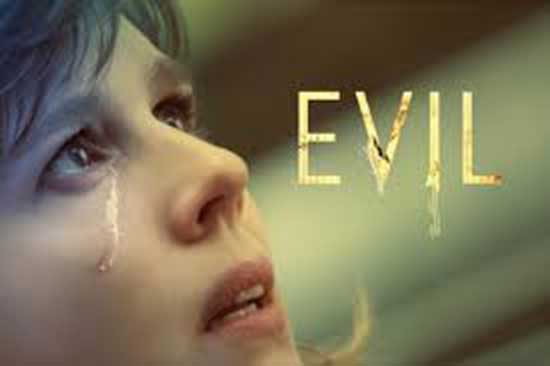

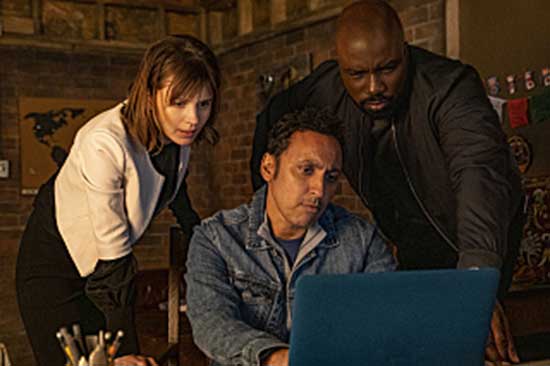
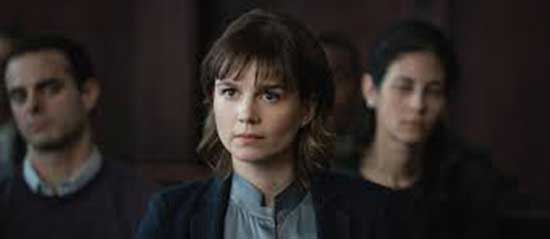
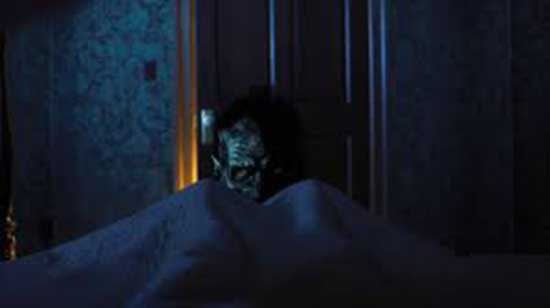
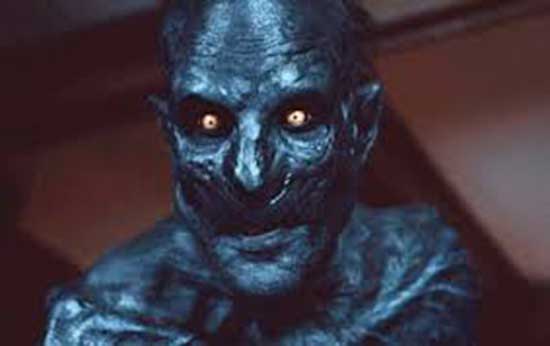


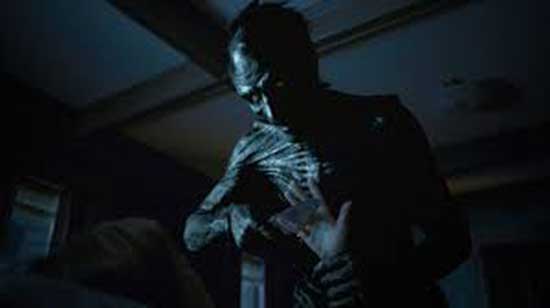
![black_mercy_falls[1]](https://horrornews.net/wp-content/uploads/2011/09/black_mercy_falls1-181x165.jpg)
